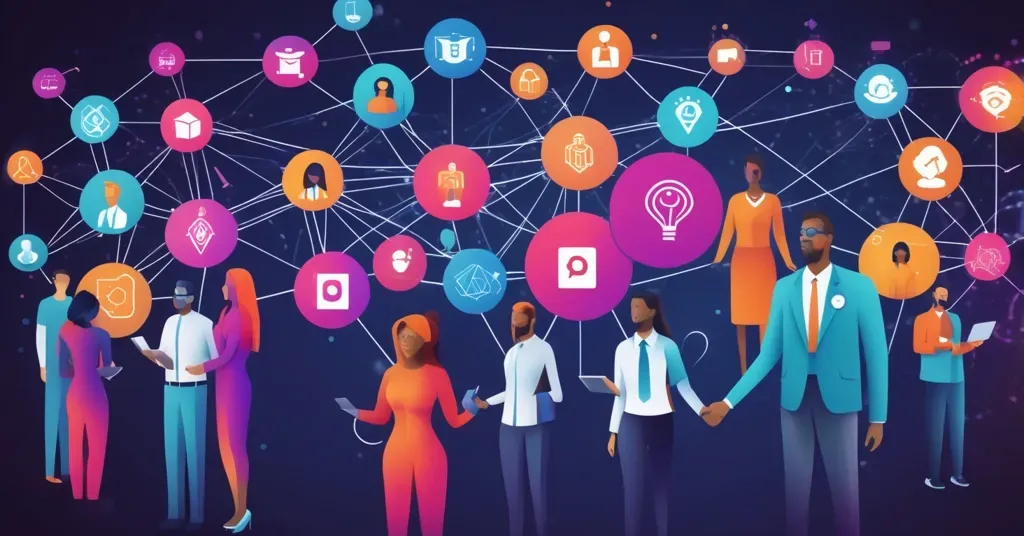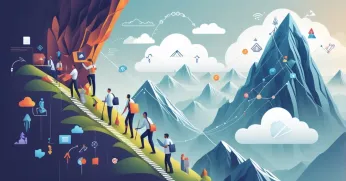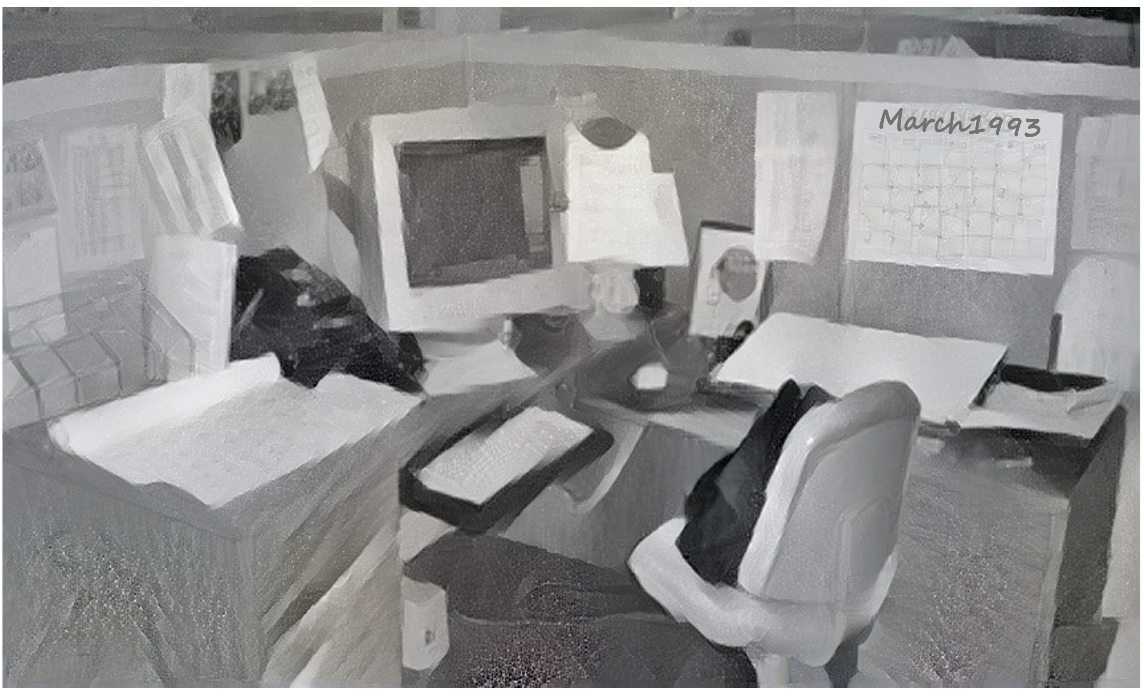
The Beginning of the End of Our Stone Age
Digital technologies keep changing faster, but we’re still the same humans, nestled in today’s context, thinking incrementally and not stressing our imagination muscles hard enough.
In 1993, just 30 years ago, three innovations came to market that would become entwined in our lives as extensions of our hands, eyes, and minds. Yet most people didn't notice them.
Only one, the web browser, launched with some success… but a minuscule 0.18% of the global population even used the Internet. The seemingly innocuous SMS, or text message, needed years of gestation before emerging in every teenager's hands. Today's dominant delivery vehicle for web browsing and text messaging, the smartphone, was greeted with "Yuck, no thanks" and fell back into labs to mature like a 15-year electronic cicada.
Predicting the future is daunting: today's context impedes our ability to envision radical changes that may render the commonplace obsolete. As such, we focus on incremental improvements to what we already have.
The best counsel I ever received about anticipating the future was to first look to the past. What was happening in 1993? If the following account of that era seems like a relic from the Baby Boomer Stone Age, then consider this sobering fact: in thirty years, 2023 will appear even more antiquated than 1993 does to us today.
When Millennials and www. Were Born
Do you remember 1993? Today the oldest Millennials are 42: they remember 1993 pretty well. The youngest millennials are 27; they're out of grad school and into the working world, but in 1993 they wouldn't be born for another three years. And the first members of Gen-Z, 26 and already looked past by marketers focused on their Gen-Alpha successors, wouldn't arrive in the world for another four years.
The Politics
Bill Clinton was sworn in as the 42nd President of the United States, and Joe Biden, four years older than Clinton, was starting his 21st year as a Senator.
Jiang Zemin was President of the PRC and General Secretary of the Chinese Communist Party. He wrestled with rapidly growing economic inequality and his ever-lurking predecessor, Deng Xiaoping. Still, in April, he launched China's National Space Administration. Meanwhile, 40-year-old Xi Jinping was working his way up as a party leader in Fujian province.
India's Prime Minister, the polymath and polyglot P.V. Narasimha Rao was navigating a vexing transition to a market-driven economy. 43-year-old Narendra Modi was on a brief political hiatus establishing a school in Ahmedabad.
A mere year and a half following the Soviet Union's unraveling, the Russian army shelled the Russian Federation's parliament building in Moscow to support Boris Yeltsin as President. 41-year-old Vladimir Putin, fresh out of the KGB, was a mid-level bureaucrat 400 miles away in St. Petersburg.
Have you noticed that today's world leaders were all middle-aged adults with fully-formed world views before over half of the people alive today were even born? That's weird.
In Yalta, Russia and Ukraine attempted and failed to decide on a program for eliminating Ukraine's nuclear arsenal, the world's third largest.
Nelson Mandela and F.W. de Klerk were awarded the Nobel Prize for Peace for ending official apartheid in South Africa.
1993 Culture
Bollywood's top-grossing film was the action-comedy "Aankhen." "Jurassic Park" led global box-office revenue, but director Steven Spielberg used only six minutes of computer-generated animation. Ireland's Niamh Kavanaugh performed "In Your Eyes" to win Eurovision, while "A Whole New World" from Disney's "Aladdin" took the Grammy for Song of the Year.
Grease, Cabaret, and Hair were playing in London's West End.
Robert James Waller's "The Bridges of Madison County" spent 19 weeks on the New York Times fiction bestsellers list. Two tomes by conservative radio talk show host, Rush Limbaugh, led all nonfiction books with their own 19-week combined Times bestseller run.
American Toni Morrison won the Nobel Prize in Literature. Her 1970 novel, "The Bluest Eye," would become one of the most frequently banned books in the United States from 2010 onward.
Globalization
The European Union launched with 12 member nations. NAFTA, the North American Free Trade Agreement, was signed. Globalization was a global mantra. Per-capita GDP began to soar in China and India as they started their ascent into top-5 world economies (1, 2, 3, 4).
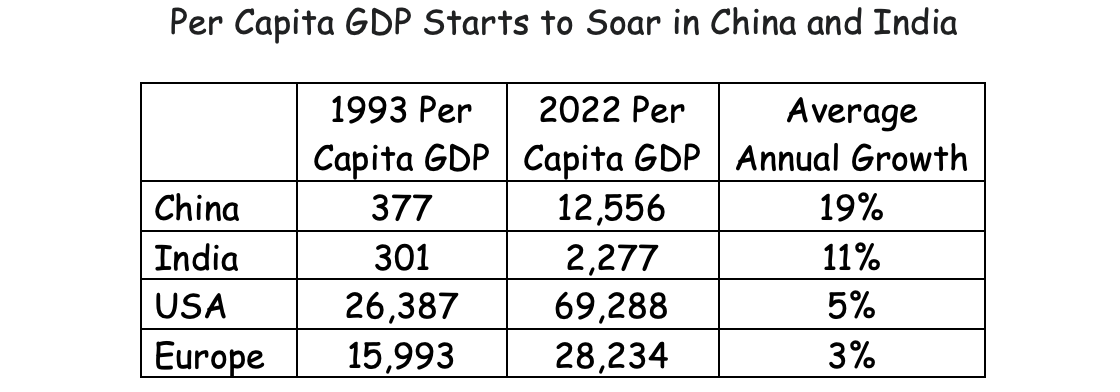
34% of the global population lived in extreme poverty, compared with 8% today
The S&P 500 opened in 1993 at 913. $1,000 passively put away in an S&P 500 index fund would grow to $15,021 at the start of 2023 (Super important point: that calculation assumes reinvesting all the dividends and paying no taxes, like in a retirement account.)
Mark Zuckerberg was in Third Grade and 11 years away from founding Facebook.
Jeff Bezos was 29; Amazon wouldn’t exist for another year.
Larry Page was a Sophomore at Michigan, and Sergey Brin was a Senior at the University of Maryland. Five years later, they co-founded Google.
Blockbuster Video definitely existed and rented out VCR tapes at a record pace, with 54% sales growth and 53% income growth in the first quarter. Taking the kids to rent movies on Saturday evenings was a big deal, and the late fees for keeping those tapes an extra day were an immense pain.
Blockbuster rented zero DVDs in 1993 because DVDs wouldn’t exist for another two years. The company that eventually put Blockbuster out of business, Netflix, wouldn’t be founded for another four years.
Your 1993 Office
OK, many of you didn’t have an office in 1993, but for old guys like me who did, here is where you worked. You always worked from the office; “working from home” was an oxymoron.
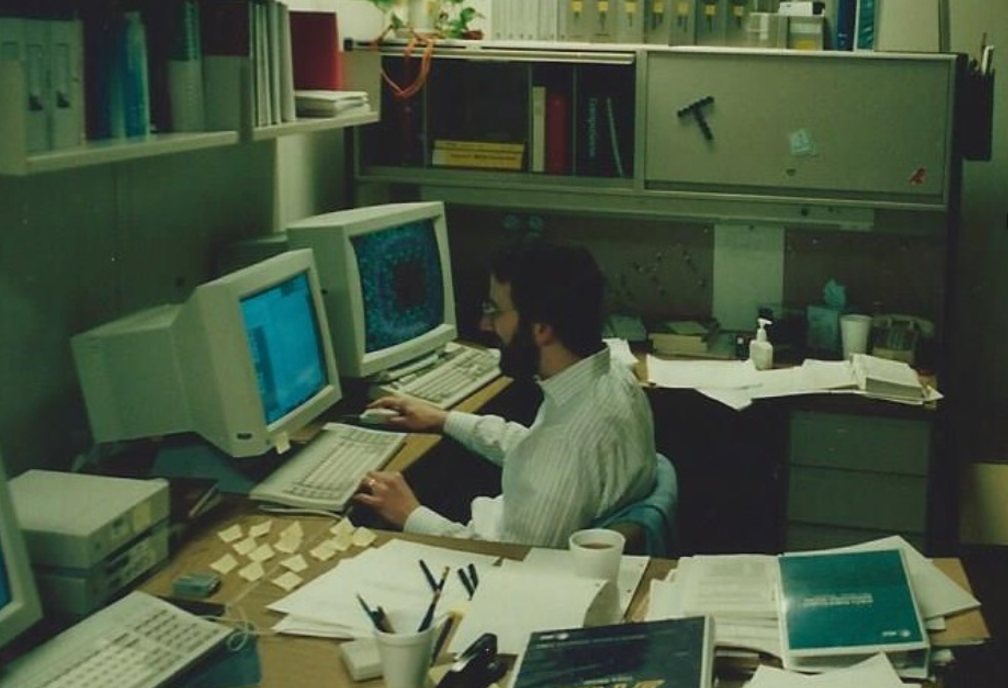
There was a desk phone. It was your second phone number, along with your home phone. If you were a hot shot you had a Nokia 1011 GSM mobile. For just 234 pounds sterling ($359USD) it… well… it made phone calls. Oh yeah, it only worked in Europe and Australia, so if you were in the U.S., Japan, China, South America, India, or Africa you were out of luck. The now-forgotten term “tri-band handset,” the uber-cool business tool of the early ‘00s, hadn’t even been invented. Only 0.6% of the global population had mobile phone service; forecasters predict the number to hit 91% in 2023.
Retrieving stored contact numbers from your phone was painful, so you memorized a ton of them. Having 15 business relationship phone numbers in your head was second nature. Sometimes I wonder if smartphones contribute to collective cognitive decline.
No one texted you because the first SMS was sent at Christmas in 1992, and virtually no handsets anywhere could send or receive text. But you may have worn a black plastic box with a monochrome character screen on your belt. It had its own phone number and would display the number calling it. It would buzz, show you that number, and leave it to you to decide whether to call back.
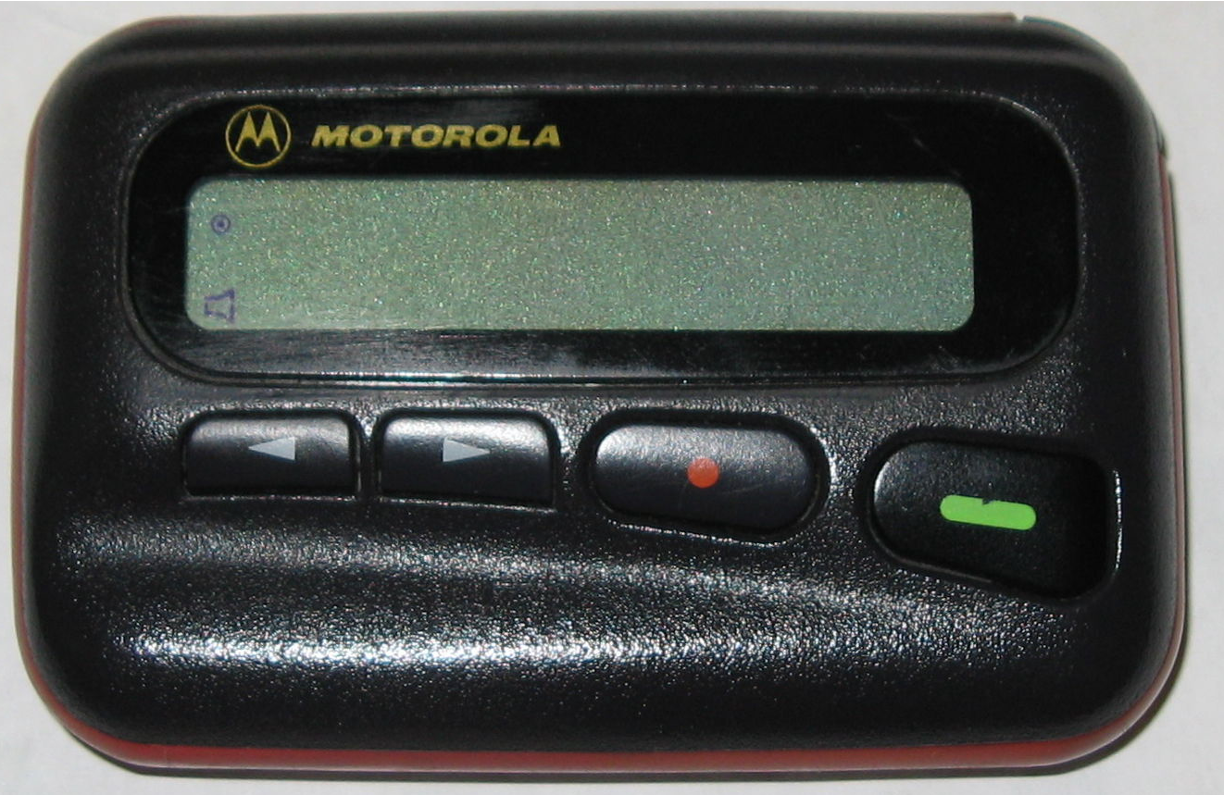
Your watch told time. And it told time. It also told time. All your business contacts were well-organized – provided you had the time to put business cards into a Rolodex.

You had a big desktop PC with a loud fan and a CRT monitor weighing 30 lbs. That computer ran Microsoft Office 3.0 – which didn’t include a web browser. Software came on CDs, and you stored documents on 3.5” floppy disks that held a whopping 1.44MB. You’d need 350,000 of those, enough to fill a crate 2 meters on a side, to store what you can on today’s 512GB drives the size of the tip of your thumb.
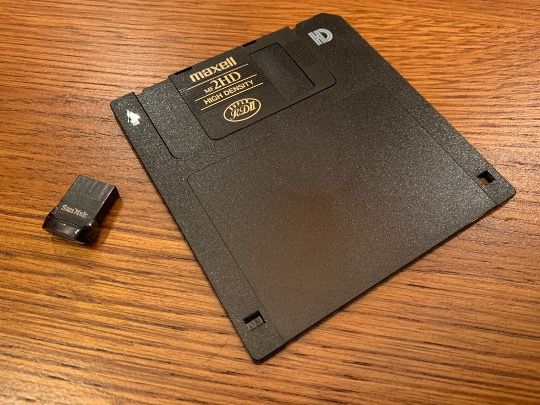
If you were a software engineer you weren’t using LINUX, today’s most popular operating system for engineers, because Rev 1.0 wasn’t released until 1994. But you could have contributed to Linus Torvalds’ LINUX project in 1993 if you enjoyed writing and debugging C and assembly code in your free time.
You had voice mail and the voice mail travel ritual. Every airport and conference center had massive banks of pay phones. Business travelers jammed in queues for a turn at these analog communication pods.
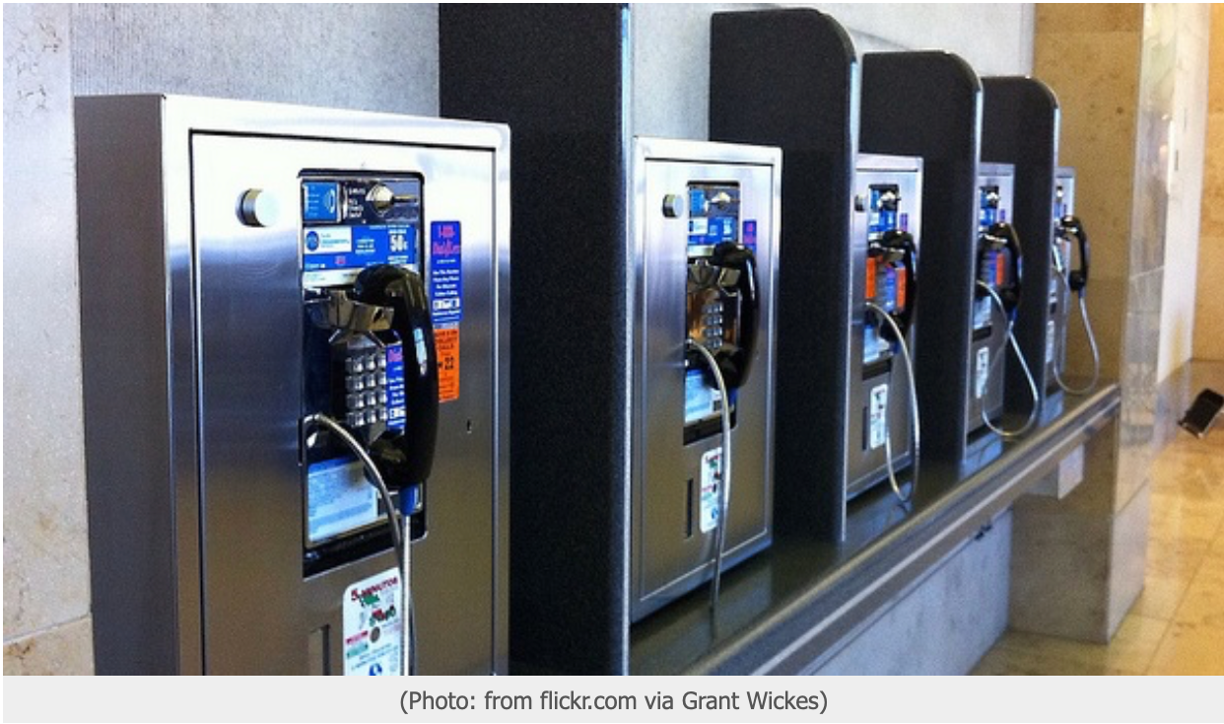
Laptop computers were less powerful than today’s smartwatches, but they gave road warriors like me text-based email. Internet connectivity outside the office came over analog phone lines and modems. This tune, analog modems hooking up (that phrase meant something completely innocent in 1993), was familiar to every mobile professional. Here’s 1993 calling:
https://www.youtube.com/watch?v=gsNaR6FRuO0
Hotel rooms didn’t have ethernet ports, and no one on the planet had WiFi until 1997. So you had to disconnect your room phone and plug in your laptop’s modem. The laptop masqueraded as a phone by requesting an outside line and transmitting the correct digits with the right time delays to connect with an analog modem at your office. To reach my company’s modem in the USA, I’d program an autodial sequence with *’s for time delays like this:
*2***1*4*0*8*5*3*5*2*4*2*8**********
It always took several tries to get the delays right. Often the room phone didn’t use a jack: a wire came out of the phone and disappeared into the wall. I traveled with screwdrivers, electric wire, and alligator clips to open phones and piggyback my laptop on their internal connections. I was such an email junky.
1993’s Big Tech News
There was still silicon made in Silicon Valley, and the most highly anticipated product launch was a chip. Intel, whose microprocessors controlled a formidable 74% of all new Windows-based personal computers, debuted the latest in the long-running “X-86” microprocessor family.
There was more talk about the new chip’s name than its exponentially-increased capabilities. The successor in the X-86 lineage of 8086, 80186, 80286, 80386, and 80486 was dubbed “Pentium.” We thought it sounded like a new toothpaste.
That was 1993. We thought we had it pretty good. As the song in the musical, “Oklahoma,” goes, “Everything’s up to date in Kansas City! They’ve gone about as far as they can go.”
Monumental Change Hid in Plain Sight
Text messaging, smartphones, and Web browsers: In 1993, most of us didn’t notice them. Transformative innovations exist long before we recognize their power. So while we Baby Boomers filed business cards in our Rolodexes, the end of work, entertainment, and social interaction as we knew them was at hand.
That first Christmas SMS in 1992 hardly caused a thumb-tapping text tornado. By 1995, text-capable mobile phone users sent only one message per user every other month. Probably a few teenagers were sending 60 messages an hour and bankrupting their parents, while most adults didn’t realize the feature existed. SMS exploded in the ‘00s; by 2011, 2.3 trillion texts were sent in the USA alone. SMS is inseparable in our lives: I wear an Apple Watch primarily for texting.
In 2023 5.3 billion people, 65% of everyone on Earth, are projected to own a smartphone. The EO Personal Communicator, launched in April 1993, was arguably the first smartphone ever.
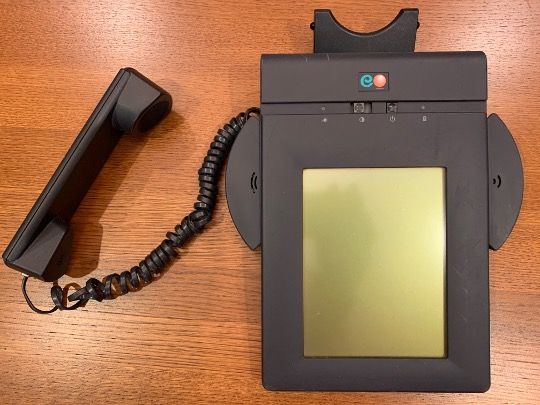
It had an email app, a word processor, spreadsheets, handwriting recognition, and an intelligent contact manager that recognized and linked names in documents. Oh, it also made phone calls. It used AT&T’s analog cellular network, so there was no SMS, but as Tom Selleck told us in this AT&T commercial, you could send a fax from the beach:
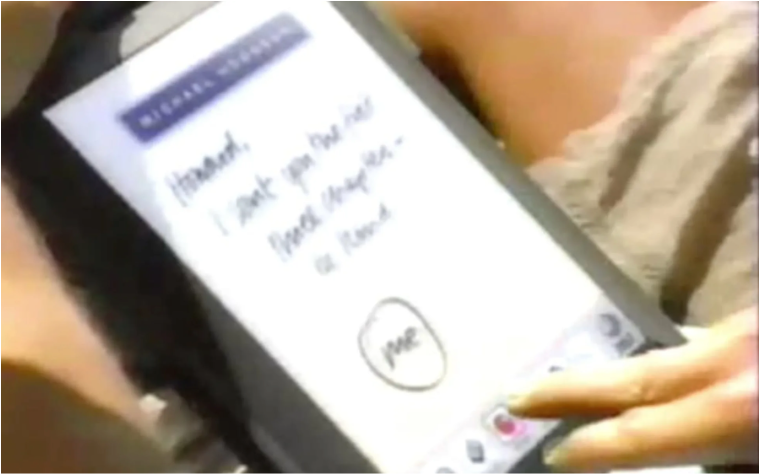
That 1993 smartphone weighed four pounds, was the size of a textbook, and cost USD 3,000. Only a couple of thousand units were sold, and the project was canceled within a year. Still, it served as an excellent example for that guy across town at Apple, Steve Jobs. It was a $200 million “learning experience” for AT&T and other investors.
EO’s product arrived 15 years too early, but Mosaic’s web browser timed the party perfectly. The first browser with a graphical interface, the first real browser, Mosaic, launched in January ‘93. That year, only 10 million people accessed the Internet, a minuscule 0.18% of the world’s population, most of whom were in North America. But internet users doubled that year, the next, and the next, and cracked 1 billion people in just over ten years.
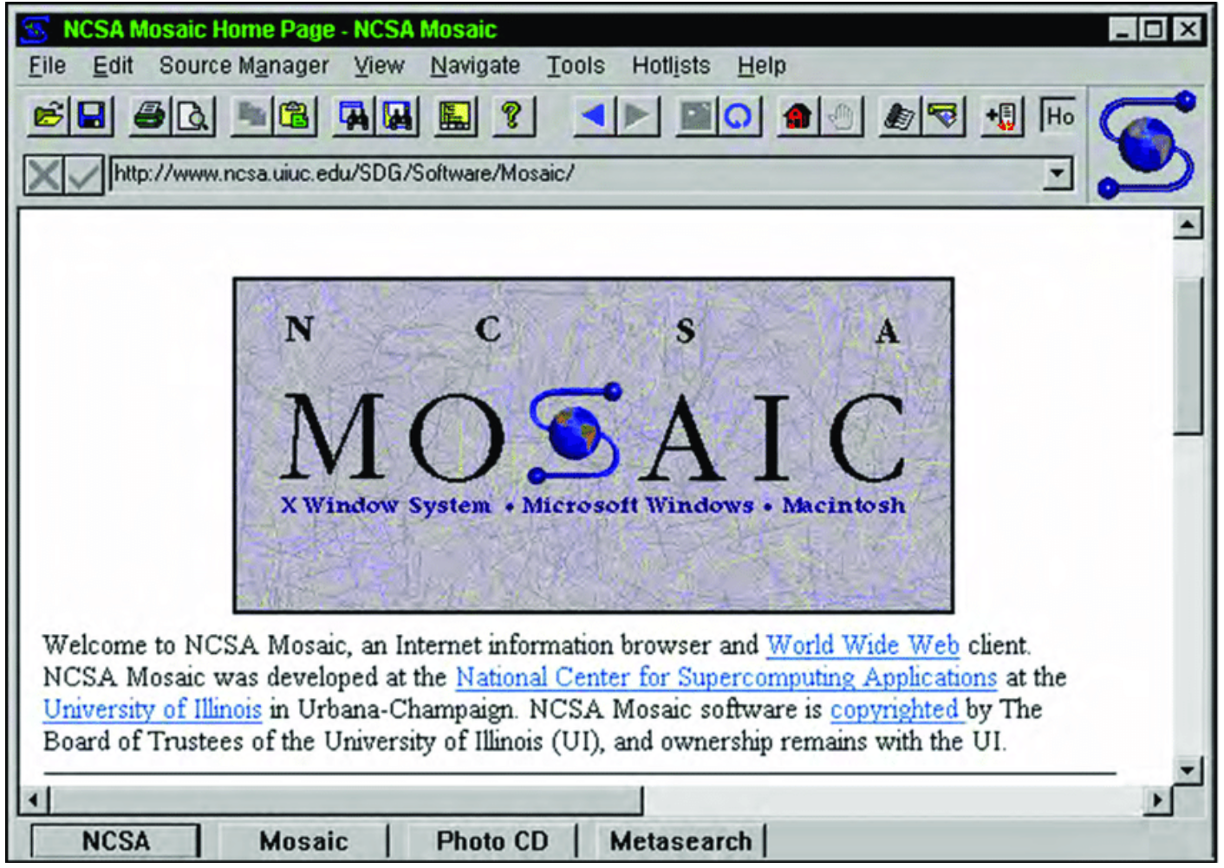
It doesn’t look like much now, but Mosaic was InfoWorld Magazine’s 1993 Product of the Year. Users loved to “point-and-click” on links and images to explore the newly-opened digital vistas.
Why Did We Have No Clue in 1993?
How long could you last without access to a smartphone, text messaging, or a web browser? I tried yesterday and was surly within ten minutes. Their melding with everyday life was inconceivable in 1993. We were buried in the context of the day.
We had libraries and the Encyclopedia Britannica: why fumble with a web browser and something called “internet?” We had phones at home, work, airports, and hotels. We could leave a voicemail for anyone, anytime. So why spend time typing contacts into an expensive, book-size phone when you have an impressively stuffed Rolodex?
We are creatures of habit, and once we’ve mastered a solution, we want to keep it.
There certainly are other reasons, too. Sadly, most of us don’t push our imaginations. Would we have liked to watch any movie, anytime, anywhere, on a gorgeous screen that we carry around in a pocket? Definitely. Did we imagine it would happen in less than 20 years as we tugged our kids and a bag of VHS tapes out of the Blockbuster store? Probably not.
Many forecasters, Ray Kurzweil especially, describe humans as linear thinkers amid exponential change. In plain English, it means many things in our world, digital technologies especially, change way faster than we expect.
In 1993, instead of digital movies sent to our phones, most of us would have imagined the next leap forward to be movies on analog tapes the size of audio cassettes.
What About In 2023?
Now, back to our challenge. Thirty years from now, 2023 will look more stone age to us than 1993 does to us today. Digital technologies keep changing faster, but we’re still the same humans, nestled in today’s context, thinking incrementally and not stressing our imagination muscles hard enough.
What incredible advances are happening right now, unnoticed amid the cacophony of news about AI and self-driving EVs, quantum computing, gene editing, batteries, crypto, and space flight?
What is right in front of us that we don’t see coming? Get crazy with that question – you might be on to something big.
Works Cited
1. “China GDP 1960-2023” https://www.macrotrends.net/countries/CHN/china/gdp-gross-domestic-product
2. “India GDP 1960-2023” https://www.macrotrends.net/countries/IND/india/gdp-gross-domestic-product
3. “U.S. GDP 1960-2023” https://www.macrotrends.net/countries/USA/united-states/gdp-gross-domestic-product
4. “European Union GDP 1970-2023” https://www.macrotrends.net/countries/EUU/european-union/gdp-gross-domestic-product

ExO Insight Newsletter
Join the newsletter to receive the latest updates in your inbox.


